Restaurants – and in particular, dining chains – are slowly but surely dying off. According to restaurant industry tracker TDn2K, 2016 was “the worst year for the restaurant industry since the recession.” Big names like TGI Friday and Chili’s, for example, faced significant sales slumps.

Slump
And, as usual, the millennials took the blame. In a letter to shareholders, Buffalo Wild Wings CEO Sally Smith attributes this problem to their younger customers’ changing tastes and habits, stating that chain restaurants are facing “a uniquely challenging market today.”
She’s not wrong. Chain restaurants like Buffalo Wild Wings “just aren’t cool anymore,” and it doesn’t seem like they’re trying to be, either. It’s high time that restaurants start to face the fact that they need to up their marketing game, or continue to be another negative statistic in the F&B industry.
With that in mind, we’ve put together a big list of essential restaurant marketing tips and tricks that will surely appeal to the next generation’s hearts and minds.
Let’s dive into it.
16 Restaurant Marketing Ideas That Will Set You Apart From The Pack
Click to Jump
1. Build buzz with local and regional media and bloggers

If a tree falls in the forest and no one was around to hear it, did it actually make a sound? These days, the media landscape is the same – if your restaurant is not being featured anywhere, does it really exist?
To a small number of passersby and holiday-goers, perhaps. But of course, you want to be known to as many people as possible, and there’s no faster way to get the word out there than through the local and regional media, and bloggers.
The best way to get them to show up and write about your restaurant would be to invite them for a complimentary tasting session. Have them come over and taste the wares, and if your food is good, you have nothing to worry about, and a whole lot to gain.
Note: do your research, and be selective with who you invite. You don’t want to inundate tech bloggers, for example, with food tasting session invites – that’s just going to look bad on you.
Further Reading
- 27 Top Singapore Food Bloggers Your Restaurant Should Follow
- How to Enlist the Help of Food Bloggers to Grow Your Restaurant
- 13 Ways To Work With Food Influencers
- Why Restaurants Should Use Food Bloggers
- How To Get a Local Food Blogger to Write About Your Restaurant
- PR for Restaurants – How to Get Free Publicity for Your Restaurant Business
2. Get (positive) reviews on local dining apps
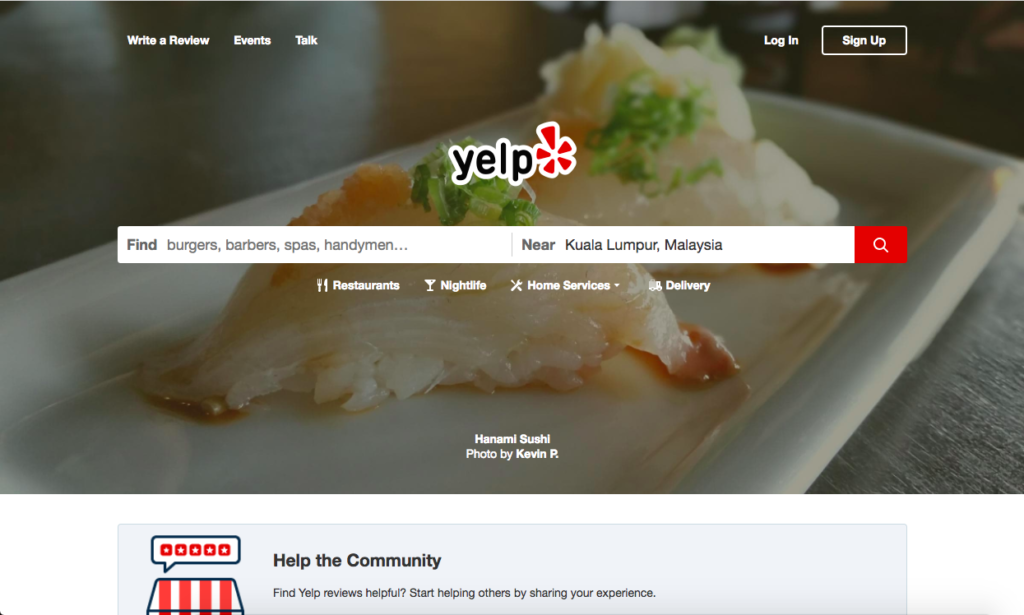
These days, it’s hard to tell if reviews of restaurants that appear in the news or on blogs are genuine, or if they were paid for. With native advertising and sponsored content on the rise, consumers are understandably more skeptical of beautifully crafted, overwhelmingly positive write-ups.
Thus, it is increasingly important for restaurants to earn good reviews from actual customers, especially on restaurant review sites and apps like Yelp and TripAdvisor. This group of people have no monetary incentive to sing your praises, and are therefore a relatively more trustworthy source.
Then again, don’t be too zealous in soliciting feedback from customers – especially if they’re halfway through their meal! The best way to get good reviews is to simply provide them with a top-notch dining experience, and after that’s done, suggest that they leave a review if they enjoyed their time.
Further Reading
- 28 Restaurant Review Sites To Track What Your Customers Are Saying
- How To Get Yelp Reviews: 11 Things To Do
- 4 Simple Hacks to Grow Your Restaurant Reviews
- 6 Ways To Get More TripAdvisor Reviews
- 25 Proven Ways To Get More Customer Reviews on Social Media
- How To Get More Facebook Reviews (Without Even Asking)
3. Reward your loyal customers
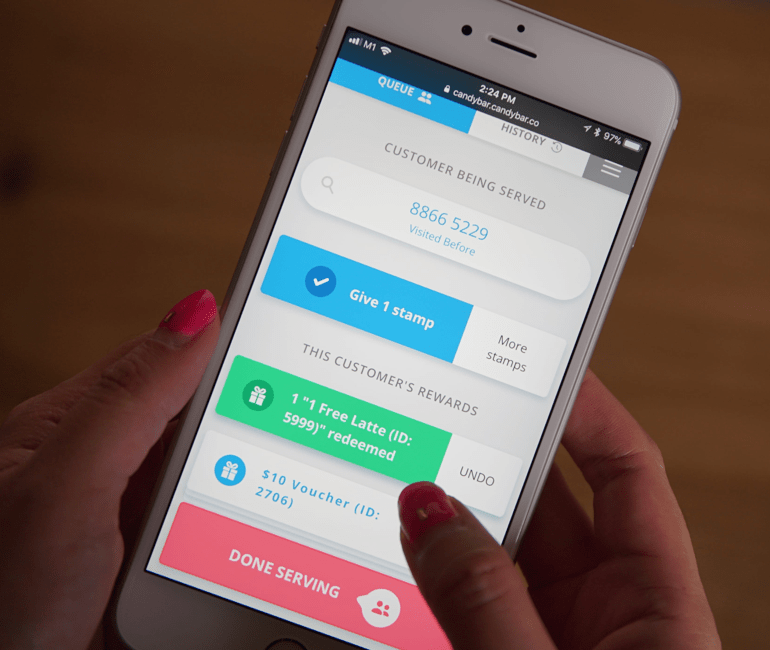
According to a survey conducted by the International Council of Shopping Centers’ (ICSC), consumers “are most loyal to food and beverage retailers,” regardless of the generation that they belong to. What this means is that there is a huge opportunity for restaurants that do it right to retain a loyal base of customers.
Apart from giving them an excellent dining experience, you can also encourage customers to keep returning by offering them discounts or freebies for repeat visits.
Just don’t make the mistake of printing loyalty cards – paper ones tend to end up in the trash! And if you don’t believe us: check out the number of companies launching loyalty card wallets to digitize paper loyalty cards.
Instead, take advantage of the massive amount of storage space that smartphones tend to have nowadays, and give out digital loyalty cards instead. Your loyal customers will thank you for that.
Further Reading
- How To Use CandyBar To Run A Loyalty Program For Your Business
- 6 Principles of Customer Loyalty
- Why You Should Run A Digital Loyalty Program
- Punch card apps: Go digital with your loyalty cards!
- 5 Top-Notch Loyalty Programs That Reimagined The Way We Think About Rewards
- Why Run Loyalty Programs? 3 Stats and Figures For Retailers To Know
- How To Choose Your Loyalty Rewards: Suggestions and Best Practices
- A Comprehensive List of 31 Loyalty Program Examples
- Loyalty Card Apps: How small businesses can boost customer retention
4. Show up frequently at local events

With so many new cafes and restaurants popping up every other day, you need to ensure that your brand presence is felt, especially in the local area. And what better way is there to establish that then by appearing regularly at local events?
Having a booth at food fairs and festivals is the most obvious way to go about this, but do consider sponsoring other events where they might require food and beverages as well. Startup events, for example, are known for their free beer and pizza – you might be able to suggest your better alternatives to that.
Further Reading
- 5 Traditional Ways to Promote Your Restaurant Locally
- 21 Restaurant Event Ideas To Get More Customers
- 5 Tips To Promote Upcoming Events At Your Restaurant
- Pop-Up Restaurants: Start Small and Build Your Business
- Should Your Restaurant Participate in Food Festivals
- 9 Offline Restaurant Marketing Ideas to Try Out in Your Restaurant
5. Ensure the highest standards on social media
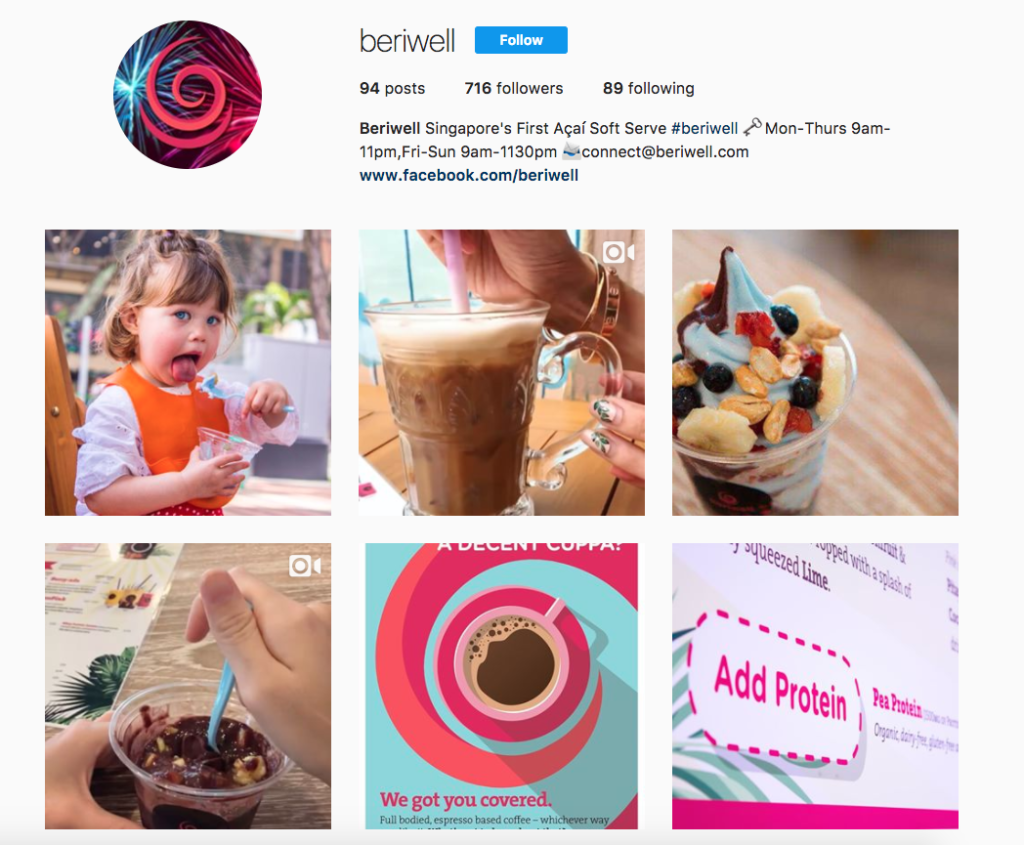
Of course, your restaurant needs to be found online as well. While it was once considered as a “nice-to-have,” social media marketing today is serious business. Chances are that your restaurant’s first touchpoint with prospective customers will be through your social media channels, and what they see there will color their perspective of your restaurant.
As such, it is essential to have high quality content on your social media channels. A critical cornerstone of any restaurant marketing strategy are stunning, delicious-looking photos of your food and beverages. Between Instagram and iPhones, we eat with our eyes before we eat with our mouths. A quick browse through Instagram will confirm this – no doubt, most of your friends are already sharing great food photos on their own!
The good news: you needn’t look further than your smartphone camera or an entry-level DSLR to capture these shots. In his breakdown on how to photograph food, BBC Good Food recipe photographer Stuart Ovenden confirms that “it’s how you apply the technology you have that really matters.”
Beyond visual content, it is also important to keep your copy grammar-free and polite at all times – even when faced with detractors. More on that next.
Further Reading
- 15 Examples of Social Media Marketing For Restaurants Done Right
- The Most Common Social Media Mistakes Restaurant Owners Make (& How to Fix Them!)
- Social Media Marketing for Restaurants: 21 Tips
- 50 Surprising Social Media Statistics In 2019
- How to Build a Restaurant Social Marketing Plan
- Nine Fresh Ideas for Restaurant Social Media Content
- The Secret to Effective Restaurant Social Media Marketing
- 87 Social Media Content Ideas For Restaurants
6. Talk to your fans (and detractors) constantly
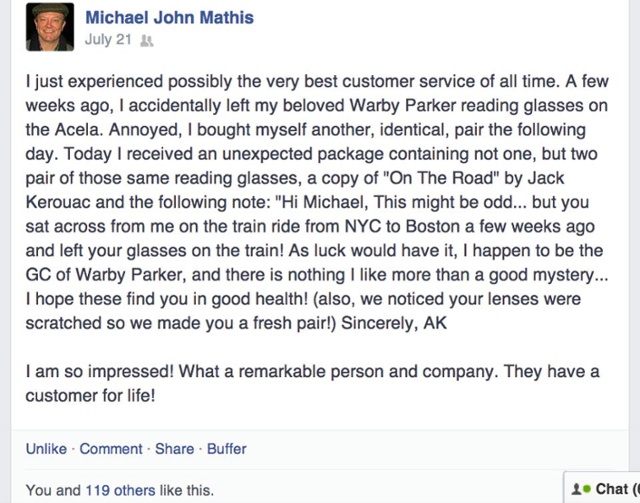
Source: Forbes
Regardless of the social media channels you decide to be present on, you are going to face both fans and detractors there. While it is a joy to engage with the former, you will need to tread very carefully when dealing with unhappy diners. As the saying goes, one bad apple spoils the entire barrel – this could well make or break your restaurant marketing strategy.
If you ever receive a negative review or comment (and you will), be sure to respond in an apologetic and friendly tone, regardless of whether he or she is right or wrong. If done right, your fiercest critics can be converted into your biggest and most vocal fans. This also demonstrates to other customers that you care about what they think, giving them assurance that they will be well taken care of at your establishment.
Further Reading
- 6 Tips On Navigating Customer Recovery For Your Restaurant
- 6 Steps To Making Your Customers Happy
- How to Respond To Negative Restaurant Reviews
- Should Restaurant Owners Respond to Negative Yelp Reviews?
- How Relentless Customer Obsession Helped A Poke Theory Grow Its Business
- 5 Ways to Deliver Excellent Customer Service at Your Restaurant
- 5 Principles For Great Restaurant Customer Service
7. Put a face (ideally, many faces) to your brand name
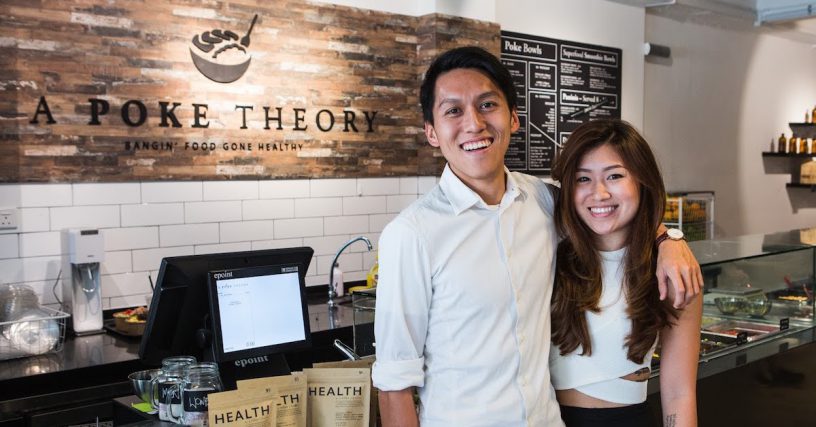
Joey and Vannessa. Credits: Vulcan Post
Another way to allow customers to be acquainted with your brand is by featuring your restaurant staff constantly. Consumers want to know that the businesses they patronize are not yet another stoic and corporate presence, but are in line with their values. A prime example of this would be the #DeleteUber boycott campaign that happened last year.
Penning the stories of why your staff are doing what they are, what they want to achieve in life, and other things that go on behind the scenes will certainly add a personal touch to your restaurant marketing efforts. And, it helps to get the name of your restaurant out there.
Further Reading
- 10 Examples of Awesome Restaurant Social Media Marketing
- Restaurant Branding – How to Brand a Chef?
- Why Chefs Should Build A Personal Brand
- 7 Effective Ways to Grow Your Personal Brand in the Restaurant Industry
- Branding the Chef to Set Apart Your Restaurant
8. Treat your staff exceptionally well
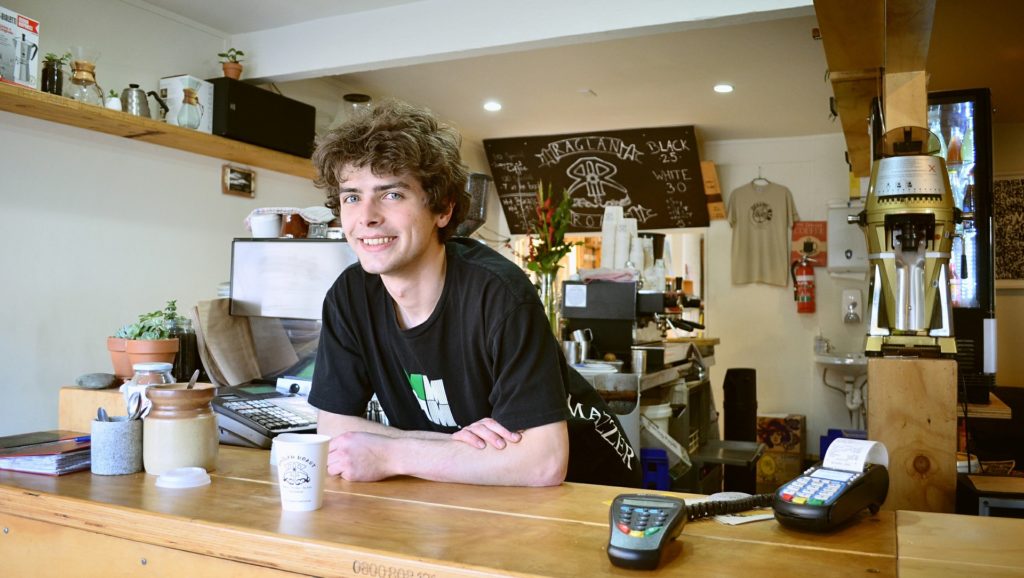
On that note, the previous tactic can very easily backfire if your restaurant staff aren’t actually happy at all. Worse still, unhappy staff will most likely result in bad customer service, and a chain of unhappy customers. Since they interact the most with your customers, they are quite literally the most prominent face of your restaurant marketing efforts.
The solution is simple: treat your staff exceptionally well, and give them the appropriate training so that they can treat your customers well, too.
Further Reading
- How To Motivate Your Restaurant Employees
- How To Get A Flawless “Front-of-House”
- 5 Ways to Show Your Restaurant Staff You Appreciate Them
- Team Building for Restaurant Employees: 9 Ideas That Work
- How To Manage Your Restaurant Staff To Get The Best From Your Team
- 5 Ways to Raise The Spirits Of Your Restaurant Staff
9. Be found on Google for relevant keywords
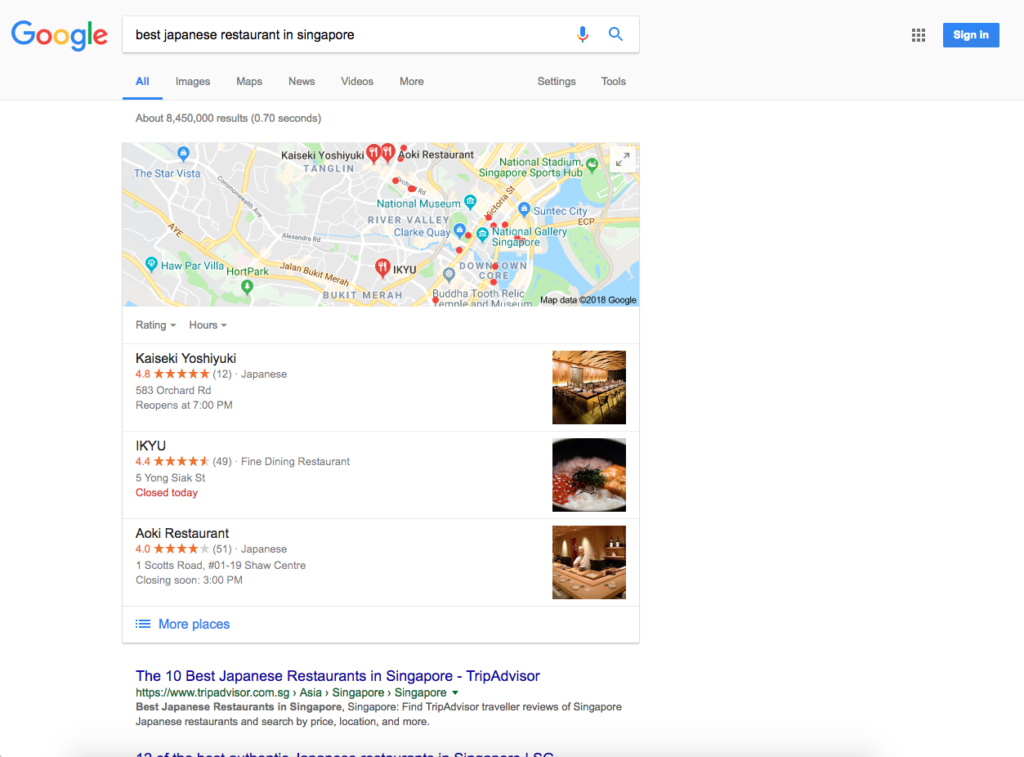
When was the last time you Googled something along the lines of, best restaurants in [area]? In a survey conducted by OpenTable, 87% of respondents said they discovered restaurants via online searches. In other words, besides social media channels, chances are that people will be searching for restaurants like yours on Google, and you want to be found for the most relevant keywords.
For example, if your restaurant sells Japanese food, it would make sense to optimize your website copy for keywords like best japanese restaurants in [area] or best sushi in [country]. Another great way to do this is to write lots of great blog posts that target these keywords, both on your blog and on other authoritative websites in your niche, which would slowly but surely send targeted traffic your way.
Further Reading
- How to Use Segmentation in SEO to Dominate Your Niche Markets
- 9 Quick Restaurant SEO Tips To Boost Your Google Search Visibility
- 4 Local SEO Tips For Restaurants
- Your Beginner’s Guide to Technical Restaurant SEO
- How To Optimize Your Restaurant Website
- Local SEO: How Restaurants Can Rank on Page One of Google Without a Website
10. Have a well-designed and informative website
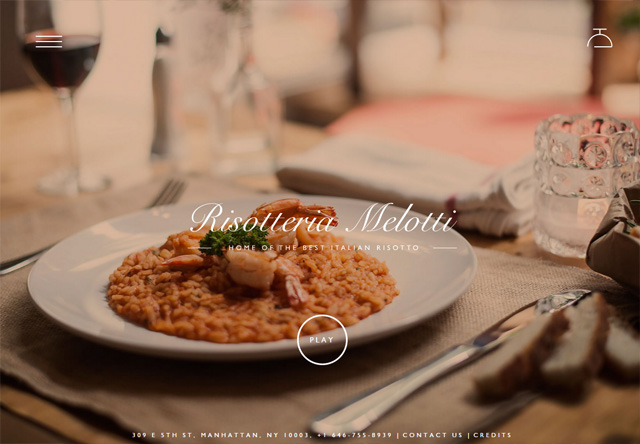
Source: Webpagefx
That said, don’t get too caught up in stuffing keywords all over your website. Once upon a time, this might have worked out, but Google has gotten wiser over the years, and has put certain measures in place which would instead penalize your website for over-optimization!
Instead, focus on making your website as user-friendly and informative as possible, with a sprinkling of keywords where most relevant. Important information, such as your restaurant’s opening hours and address, should be as easy to find as possible.
Most importantly, be sure to make your menu accessible as well. After all, customers are visiting your restaurant primarily for the food, and will no doubt be looking through your website to get a foretaste of what they be eventually dining on. Don’t disappoint them!
Further Reading
- 150 Amazing Restaurant Website Design Examples
- Restaurant Web Design Essentials
- 7 Tips & Tricks To Creating A Gorgeous Restaurant Website
- 10 Tips For Great Restaurant Website Design
11. Refresh your menu regularly (and make a big deal about it)

Once you’ve gotten people in to try out your food, don’t stop there and rest on your laurels. Customers are always looking for new and trendy items to taste, and you don’t want them to go to your competitors in search of those.
Rather, keep innovating and experimenting with new food items on your own menu, so that its constantly fresh and exciting to returning customers.
Not only that – be sure to get the word out whenever you launch brand-new menu items, so that you’re constantly creating buzz around your restaurant. Invite your journalist and blogger now-friends, and offer your most loyal customers exclusive discounts, or even free tasting opportunities, so that they feel like a part of your team.
Further Reading
- 50 Restaurant Menu Designs That Look Better Than Food
- Guide to Menu Design: 6 Easy Tips For Creating a Restaurant Menu
- 7 Menu Engineering Tips For Restaurant Owners
- Menu Design Copywriting: Why It’s Important and What to Think About
- 10 Menu Design Hacks Restaurants Use to Make You Order More
12. Work with delivery services
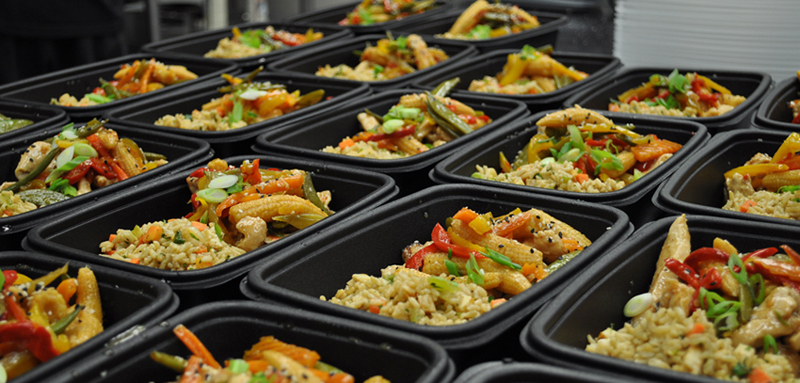
Convenience is the name of the game for many customers today. Whether it’s books, computers, groceries, or food, everything can (and will be) delivered to their homes, where they can enjoy it in their own time and space.
And with the many food delivery services in the market, you needn’t bother yourself with creating your own. Simply partner with companies like Foodpanda, Deliveroo, and UberEats, and you can reach a whole new segment of customers in an instant. Who knows – some people might even discover your restaurant for the first time on these apps, too!
Further Reading
- Food Delivery Is The Next Big Thing: How To Be A Part Of It
- How To Workout More Sales With An Online Food Delivery Portal
- 7 Proven Tactics for Driving Your Restaurant Online Order Sales
13. Pay Google to appear in their search engine
No matter how hard you may hustle, ranking in Google will take time. You’ll have to be patient as you slowly work your way up the pages, so that you can rank #1 for your desired keyword.
An alternative method you can consider is paying Google to appear #1 in their search engine. This technique is called search engine marketing – and it involves you bidding on your desired keywords.
Once your bid has been accepted, you’ll automatically appear at the top of Google’s search results with your ad copy. This is a good play combined with SEO, as you can appear at the top of search results while you’re waiting for organic traction.
Further Reading
- How To Promote Your Restaurant With Google Adwords
- Should You Start Google Adwords for Your Restaurant? Here’s The Formula You Need To Decide
- 10 Tips To Nail Your Food & Restaurant Advertising
- How To Build A Performance Driven Google Paid Search Campaign For Restaurants Spending Only A Few Dollars Per Day
14. Appear on social media as paid advertisements
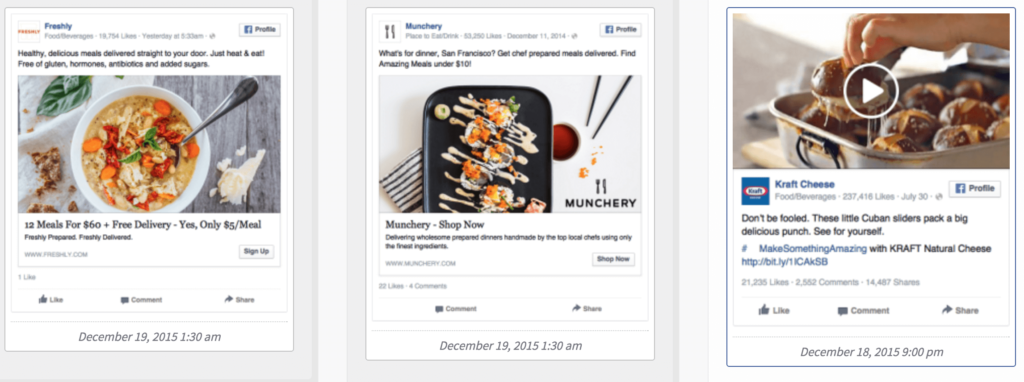
Another method of advertising is social media. Similar to Google’s ad-auction system, you can also bid to appear on your target customers’ timeline on Facebook, Instagram or Twitter (or any other major social media network that will appear).
You can use a variety of media to entice them to visit your restaurant (images, videos, GIFs, etc.). Some attractive offers could be offering them special deals or discounts, promote an upcoming event, or simply build brand awareness so that they will think of your restaurant when they’re wondering where to go.
Further Reading
- 15 Tips for Getting Your Restaurant Started With Facebook Ads
- Facebook Ads For Restaurants: 5 Killer Ads Strategies
- 23 Restaurant Marketing Tips & The Instagram Ads That Will Make You Drool
- 7 Proven Hacks To Turn Any Restaurant Into An Instagram Powerhouse
- Restaurant Guide: How To Maximize Your Success On Instagram
15. Send your customers emails to get them coming back
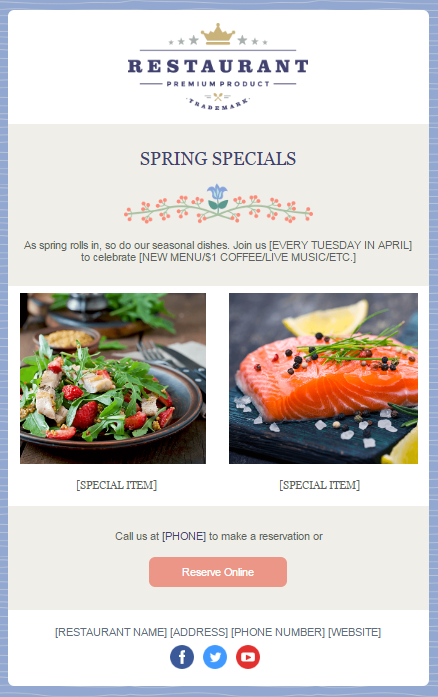
Email is still the #1 communication channel of choice for many people. Up to 91% of consumers check their email on a regular basis.
And stats agree that email is a highly profitable channel. Email marketing has an ROI of 3,800% and the average order value of email marketing is THRICE that of social media!
Collect your customer contact details via your website, or during the course of their meal at your place. Offer them a small 5 – 10% discount for giving you their email addresses. Alternatively, you can also use digital loyalty programs like CandyBar to note down their contact details when they join.
Then, when you’ve built up this list, you can send them timely emails to encourage them to come back to your restaurant, offer them additional deals and offers or promote a special event (like Valentine’s Day).
Further Reading
- Restaurant Email Marketing: How to Attract More Customers
- The Beginner’s Guide to Restaurant Email Marketing
- How To Fill Seats in Your Restaurant With Email Marketing
- The Secret to Effective Restaurant Email Marketing
- 12 Tips for Creating Restaurant Marketing Emails That Work
- When Marketing a Restaurant, Build your Email List the Right Way
- 7 Restaurant Marketing Strategies to Win Customers
- Email Marketing Plan for Restaurants: A Full Guide on How to Start Off
16. Make your customers as comfortable as possible
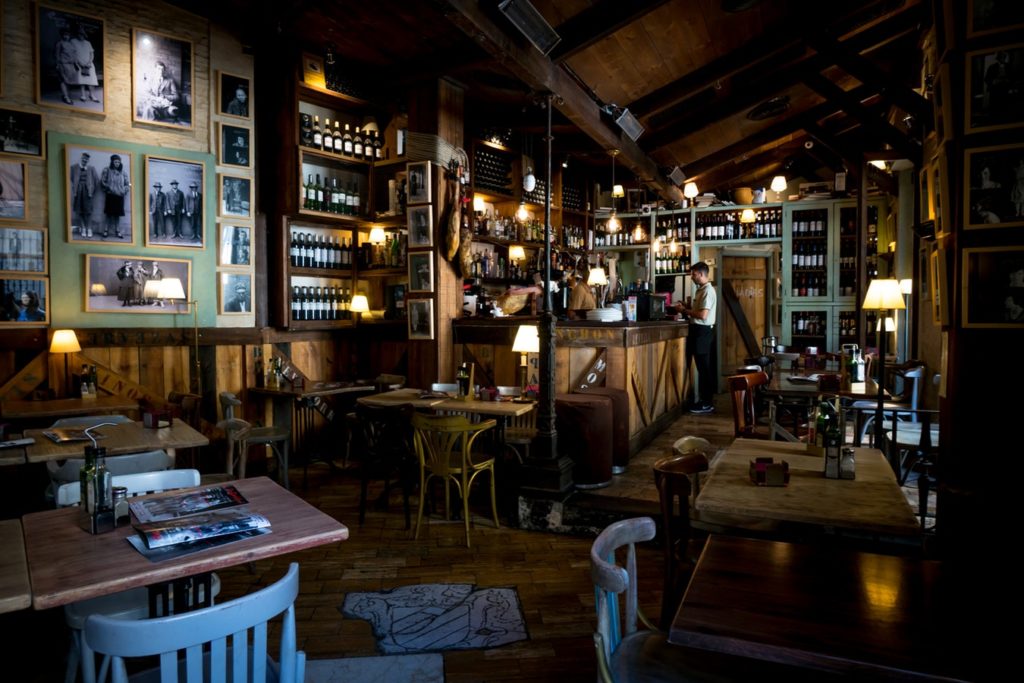
I’ve saved the most important point for last. All the restaurant marketing ideas I’ve listed above are for naught if, at the end of the day, your customers do not enjoy their dining experience.
Therefore, it is critical to make them as comfortable as possible in your establishment. Some of the nice value-added items might include free wifi, drinking water, and hooks or baskets for diners to place their bags in.
Treat your customers well, and they’ll become your best restaurant marketing tool yet.




